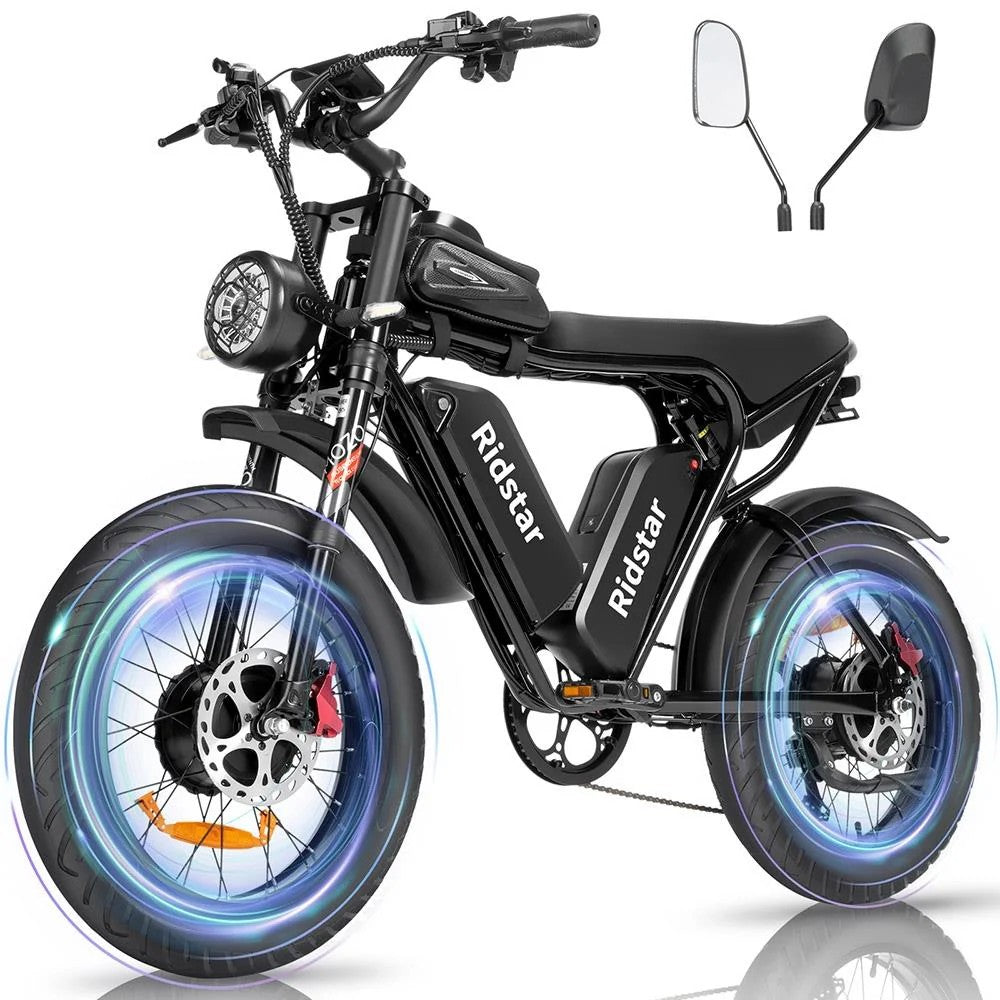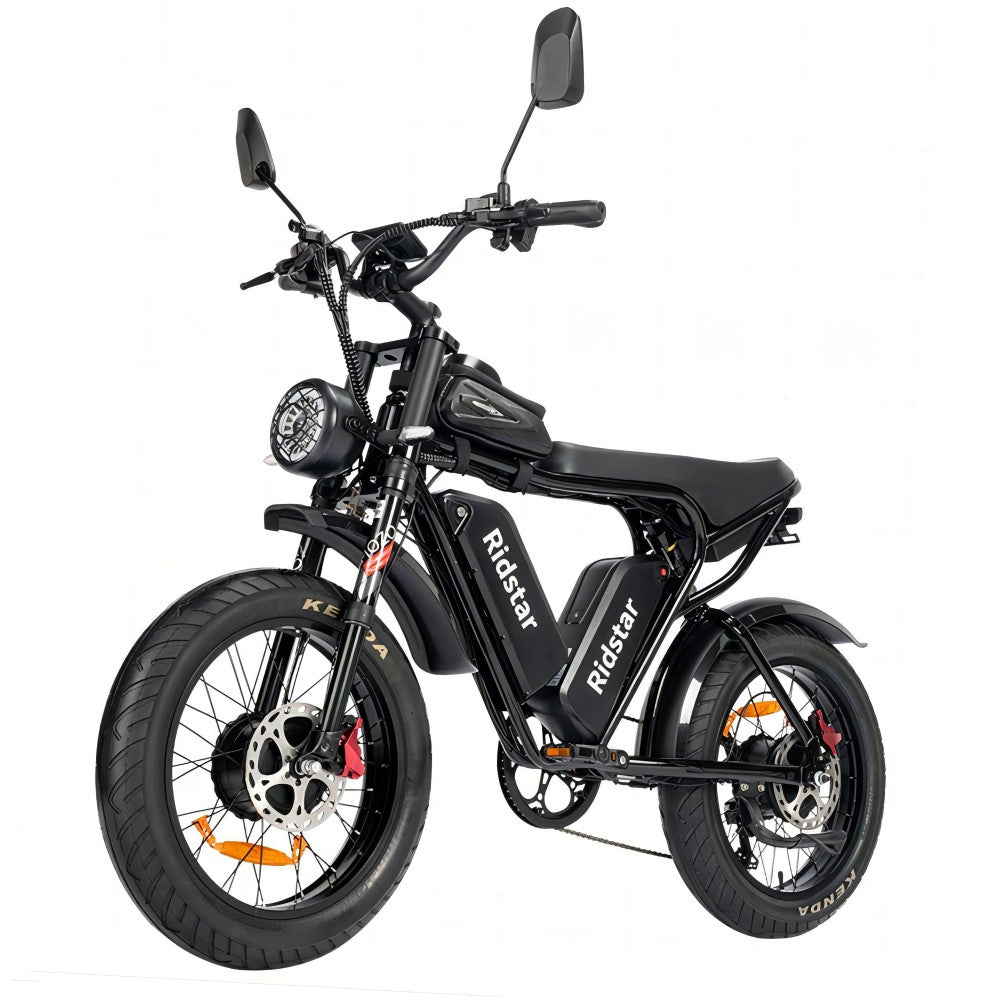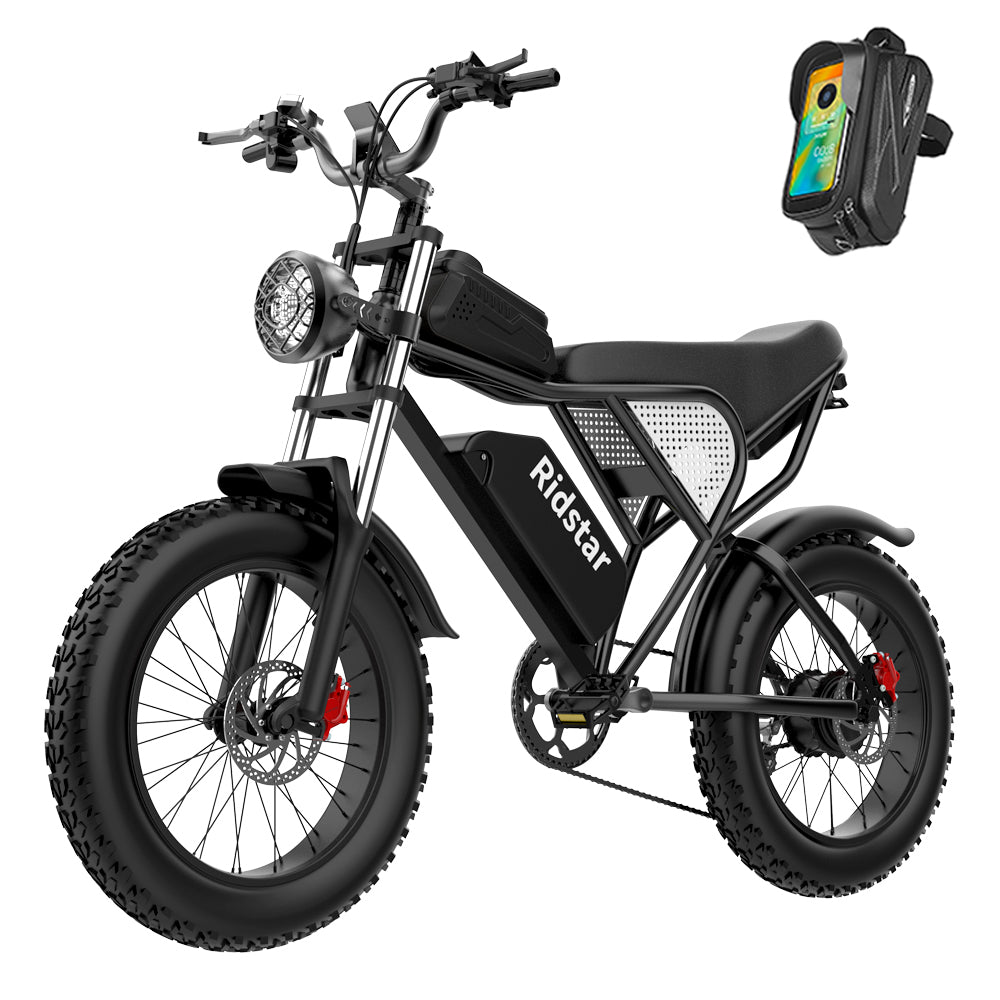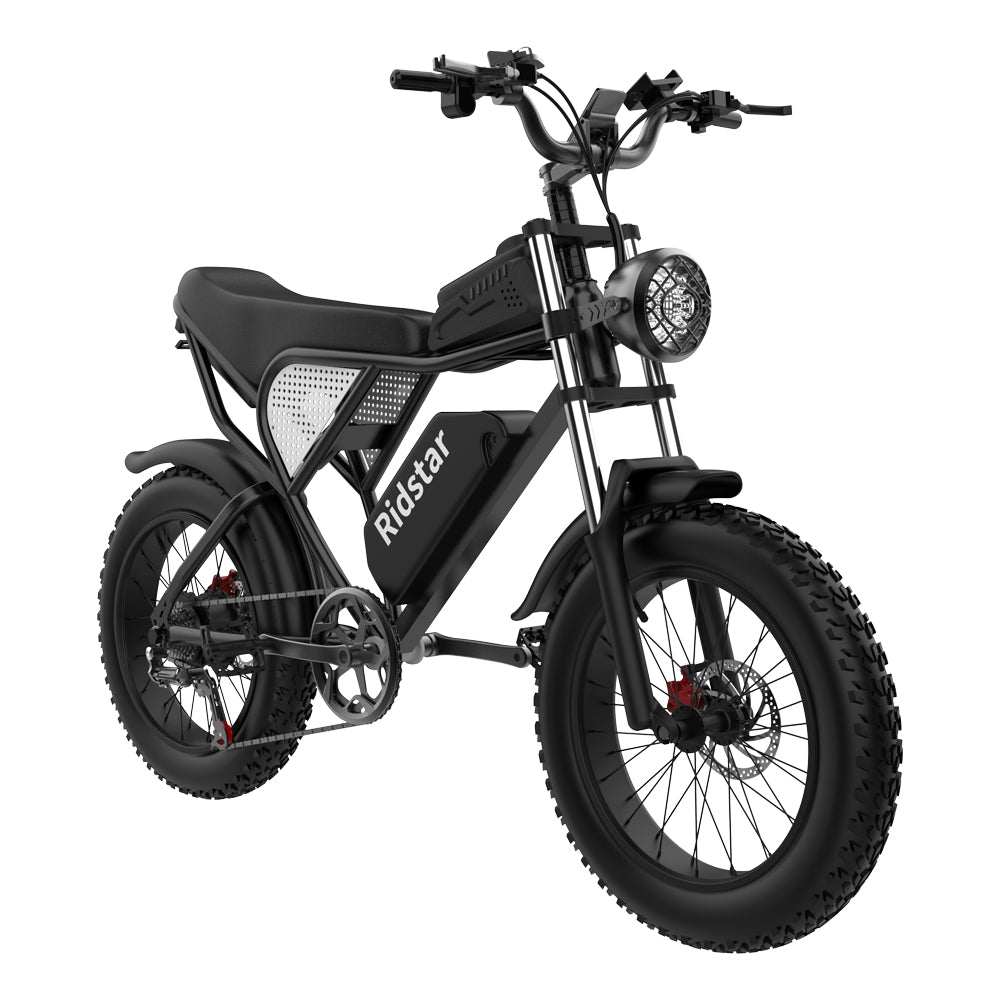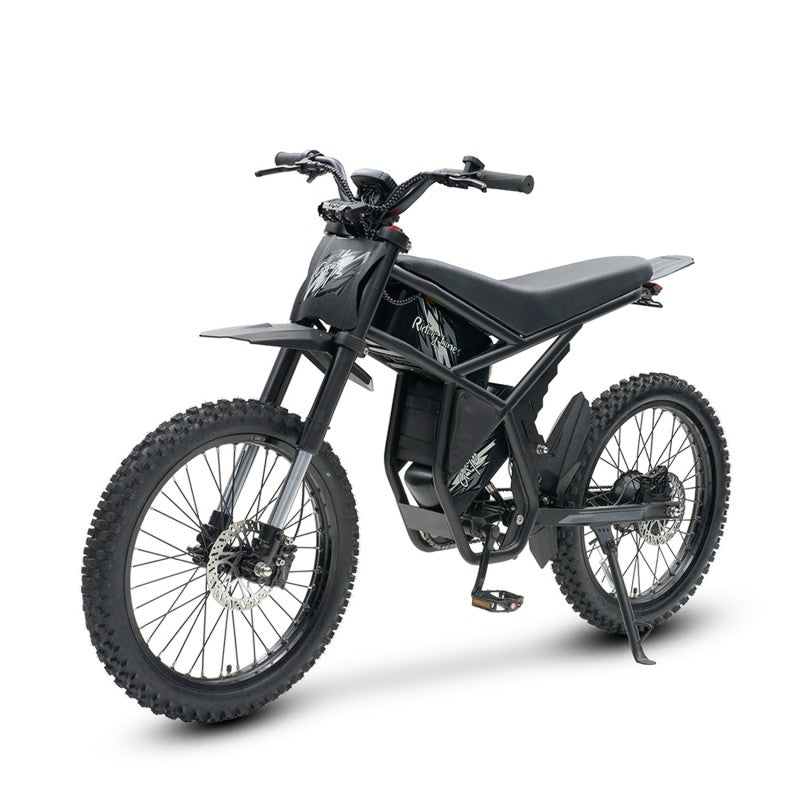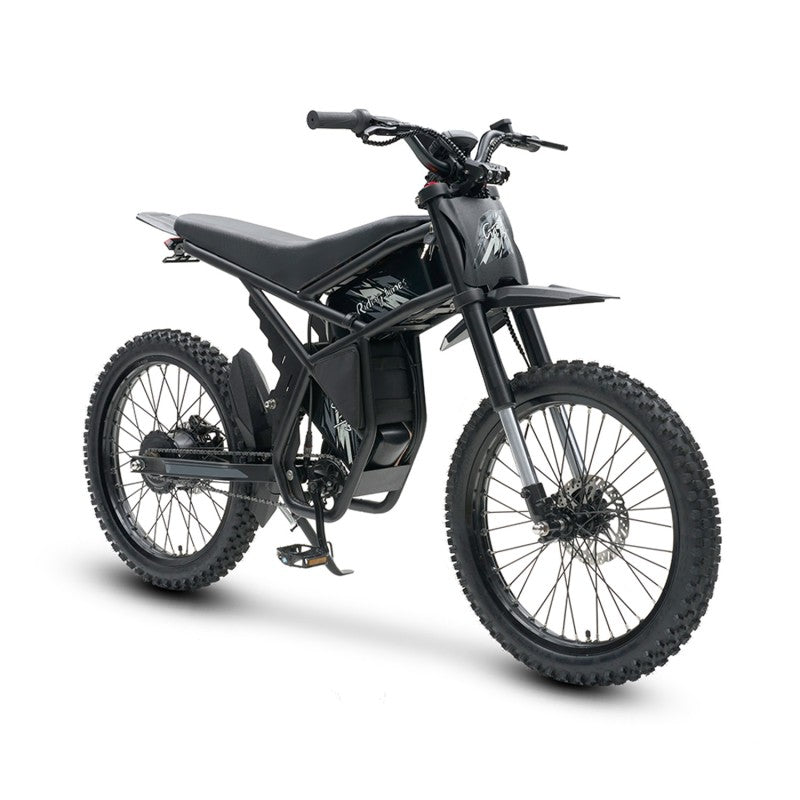As electric bikes and scooters become more popular for daily commutes and short-distance travel, riders are noticing a troubling trend: their vehicles no longer go as far on a single charge. A decreased battery range can be frustrating, but it’s often avoidable. Understanding the causes behind battery drain and learning how to prevent it can save you money, reduce downtime, and keep you riding longer.
Let’s explore the top reasons your ebike or electric scooter battery range might be shrinking and what you can do about it.
Understanding Battery Range
Battery range refers to how far your electric vehicle can travel on a single full charge. For most e-bikes and scooters, this varies based on:
-
Battery capacity (in Ah or Wh)
-
Motor power (in watts)
-
Riding conditions (terrain, speed, weather)
-
Total weight (rider, cargo, and frame)
-
Battery age and health
In general, a healthy battery on a standard electric bike (around 13-25Ah) can cover 50-150 km, while a scooter may go 40-90 km. But if your vehicle is underperforming, one of the following reasons could be to blame.
Top 7 Reasons for Decreased Battery Range
1. Battery Aging
Lithium-ion batteries degrade over time. After 500–1000 charge cycles, most batteries begin to lose capacity. If your battery is over two years old and you've charged it frequently, it's likely lost some range.
2. Rider Behavior
Aggressive acceleration, riding at top speeds, and climbing hills drain energy faster. Smooth riding conserves power.
3. Underinflated Tires
Low tire pressure increases rolling resistance, meaning your battery has to work harder to move the same distance.
4. Weather Conditions
Cold temperatures reduce battery efficiency, while extreme heat can damage battery chemistry.
5. Overloading
Riding with heavy loads or an additional passenger affects range. Always stay within your e-vehicle’s weight limit.
6. Faulty Components
Motor issues or worn-out brakes can drain the battery prematurely. Regular servicing helps avoid hidden mechanical problems.
7. Poor Charging Habits
Charging the battery to 100% all the time or letting it drain to 0% shortens lifespan. Follow the 20%-80% rule when possible.
Battery Age and Chemistry
Lithium-ion batteries, commonly used in ebikes and electric scooters, naturally degrade with time. The aging process is influenced by:
-
Charge cycles: The more cycles, the less effective the battery becomes.
-
Heat exposure: Excessive heat accelerates chemical breakdown.
-
Storage method: Storing fully charged or completely discharged batteries shortens life.
Use apps or battery management systems (BMS) to monitor health indicators such as voltage, cycle count, and internal resistance.
Temperature and Weather Effects
Cold weather slows the chemical reactions inside batteries, making them less efficient. On the other hand, extreme heat can damage battery cells and permanently reduce capacity.
Tips for managing weather impact:
-
Store your vehicle indoors during temperature extremes.
-
Pre-warm the battery before riding in cold conditions.
-
Avoid long exposure to direct sun or heated garages in summer.
Riding Behavior and Terrain
Quick starts, frequent braking, and steep hills all demand more energy from your battery. Riding at a consistent speed and using pedal-assist mode efficiently (for ebikes) can help stretch your range.
Helpful riding strategies:
-
Maintain moderate speeds.
-
Coast downhill when possible.
-
Avoid full-throttle bursts unless necessary.
Weight and Load Issues
The total weight your scooter or ebike carries—including your own weight, backpack, or groceries—directly affects the battery range.
What you can do:
-
Minimize unnecessary cargo.
-
Opt for lightweight accessories.
-
Choose higher-capacity batteries if you need to carry heavy loads regularly.
Charging Habits That Damage Batteries
Consistently charging your battery to 100% or draining it to 0% can shorten its lifespan.
Best charging practices:
-
Charge between 20% and 80% for regular use.
-
Use the manufacturer-approved charger.
-
Avoid charging immediately after a ride (wait until the battery cools).
Tire Pressure and Maintenance

Maintaining the correct tire pressure isn’t just about safety—it significantly affects your electric bike or scooter’s battery range. Underinflated tires create more rolling resistance, making the motor work harder and drain the battery faster.
Tips for proper tire maintenance:
-
Check tire pressure weekly using a reliable gauge.
-
Inflate to the manufacturer's recommended PSI.
-
Replace worn-out or punctured tires promptly.
-
Choose puncture-resistant tires for longer-lasting performance.
Even a slight drop in PSI can cause a noticeable decrease in range, especially for smaller scooter tires that are more sensitive to pressure changes.
Signs Your Battery Needs Replacement
Sometimes, reduced range isn’t just about poor habits—it’s a sign your battery is reaching the end of its life.
Key indicators include:
-
Rapid drops in charge level.
-
Taking longer to charge or not charging fully.
-
Reduced power and sluggish acceleration.
-
Noticeable decline in range even after a full charge.
You can test your battery using a multimeter to check voltage output or a diagnostic app provided by the manufacturer (if available). If your battery consistently underperforms despite proper care, it may be time for a replacement.
How to Extend Battery Life
Prolonging your battery's health is easier than you think. Consistent care and minor adjustments can make a big difference.
Best practices include:
-
Store at 40–60% charge during long breaks.
-
Avoid full discharges and overcharging.
-
Use original or high-quality certified chargers.
-
Keep your battery cool and dry during storage.
-
Charge at room temperature (between 10°C and 30°C).
These small habits can add years to your battery’s life and keep your range closer to the original specs.
Recommended Battery Maintenance Tools
You don’t need a full toolkit, but a few essentials can help you maintain battery efficiency:
| Tool | Purpose |
|---|---|
| Digital Tire Gauge | Maintain optimal tire pressure |
| Multimeter | Check voltage and overall battery health |
| Smart Charger | Prevent overcharging and manage cycles |
| Battery Tester | Diagnose battery cell performance |
| Thermal Bag | Protect battery from extreme cold |
Investing in these tools ensures you're always aware of your battery’s health and performance metrics.

Choosing the Right Battery for Replacement
When it's time for a new battery, don't just pick the cheapest option. Consider:
-
Voltage and capacity: Match or exceed the original specs.
-
Brand compatibility: Stick with your vehicle’s brand if possible.
-
Cycle life: Look for batteries rated for 500+ charge cycles.
-
Warranty and reviews: Choose trusted, well-reviewed suppliers.
Some recommended brands for replacements include Bosch, Samsung, LG Chem, and Panasonic—especially if you're riding a premium ebike.
Ebike vs Electric Scooter Battery Differences
Although both vehicles rely on lithium-ion cells, their battery needs differ:
| Feature | Ebike Battery | Electric Scooter Battery |
|---|---|---|
| Capacity | Higher (400Wh–700Wh) | Lower (150Wh–500Wh) |
| Voltage | 36V or 48V or 52V | Often 48V or 36V |
| Charging Time | 3–6 hours | 2–4 hours |
| Removability | Usually removable | Usually built-in |
| Weight | Heavier | Lighter |
Understanding these differences helps when choosing accessories, chargers, or spare batteries.
When to Seek Professional Help
If your battery or scooter continues to underperform after you've checked the basics, it may be time to consult a professional.
Signs you need help:
-
Strange smells or swelling around the battery.
-
Short-circuits or electrical faults.
-
Sudden shutdowns mid-ride.
-
Inconsistent charging behavior.
Visit a certified ebike/scooter technician or your brand’s service center to avoid permanent damage or safety risks.
Environmental Impact of Battery Waste
Improper disposal of batteries can cause serious environmental damage. Lithium-ion cells contain toxic metals that pollute water and soil.
How to responsibly dispose of old batteries:
-
Take them to certified e-waste recycling centers.
-
Use manufacturer recycling programs (like Bosch’s battery return).
-
Never dispose of batteries in household trash or open air.
Supporting battery recycling initiatives helps reduce electronic waste and promotes sustainability.
Frequently Asked Questions (FAQs)
1. How many years does an ebike or scooter battery last?
Most batteries last 2–5 years, depending on use and maintenance.
2. Why does my new battery still lose range quickly?
It could be due to tire pressure, riding behavior, terrain, or cold weather.
3. Can I use any charger for my ebike or scooter?
No. Always use the manufacturer-recommended charger to avoid overvoltage damage.
4. How do I store my battery for winter?
Store it at 40–60% charge in a cool, dry place away from direct sunlight or freezing temperatures.
5. Is it okay to charge my battery overnight?
Occasionally is fine, but avoid regular overnight charging to prevent long-term degradation.
6. How do I know if my battery is fully charged?
Check the indicator light on the charger or your vehicle’s display panel. Some smart chargers auto-stop when full.
Conclusion and Final Tips
A decrease in ebike or electric scooter battery range is often avoidable with the right care. By understanding the causes—like poor charging habits, heavy loads, or underinflated tires—you can make smarter decisions and prolong battery life.
✅ Quick Recap:
-
Monitor tire pressure and charge wisely.
-
Ride efficiently and avoid overloading.
-
Store and maintain your battery properly.
-
Replace it when necessary using reputable brands.
Whether you're commuting or riding for fun, a healthy battery ensures every ride is smoother, safer, and more energy-efficient.






